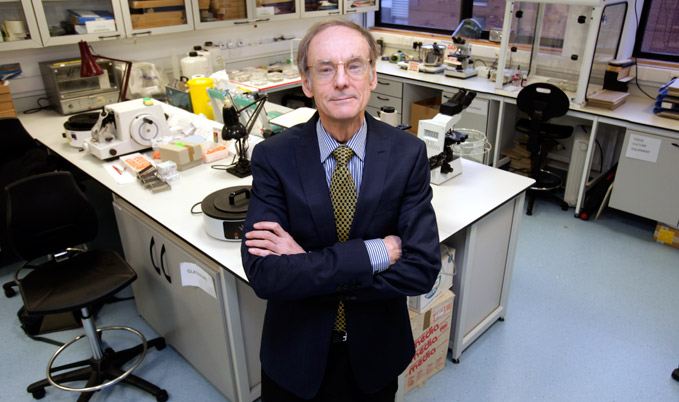Diabetes remission defined
Type 2 diabetes - remission defined across the world
Published on: 31 August 2021
The definition of remission from type 2 diabetes has been re-written for medics in America, Europe and Britain thanks in part to the work of Newcastle University’s Professor Roy Taylor.
He is an author of a consensus report which today makes clear to all that the first step in treating type 2 diabetes is to offer a choice – conventional tablets and the associated risk of complications or major weight loss and full enjoyment of life.
It has been simultaneously published in four major academic journals - Diabetes Care, Diabetologia, Diabetic Medicine, and The Journal of Clinical Endocrinology & Metabolism.
Professor Taylor’s work built over several decades to demonstrate that Type 2 diabetes is a reversible disease. This consensus report provides a simple guide for patients and doctors – everyone can now understand when type 2 diabetes can be said to be in remission and people have returned to health.
A consensus report contains a comprehensive examination and is authored by an expert panel (i.e., consensus panel) and represents the panel’s collective analysis, evaluation, and opinion.
Professor Roy Taylor is founder of the Newcastle Magnetic Resonance Centre and member of the Translational and Clinical Research Institute, Newcastle University and has built up a body of work demonstrating that type 2 diabetes is reversible through weight loss and maintaining that weight loss. A resume of that work and the low calorie diet can be found on the University website.

Professor Taylor explained to us the importance of the consensus report:
What does this mean for people seeking treatment for Type 2 diabetes?
It makes clear to all that the first step in treating type 2 diabetes is to offer a choice – conventional tablets and risk of complications or major weight loss and full enjoyment of life. For the first time, doctors across the world are being told that this disease does not have to be for life. And for the first time, patients have the knowledge to be in the driving seat.
Why is this important?
Previously, there was confusion about when people could say that they no longer had type 2 diabetes. This is now set in black and white – in simple language.
Why is a consensus needed?
An international agreement gives confidence to everyone – patients, doctors, insurance companies – about when a person has returned to health. For instance, in countries where people pay for medical insurance, this can save them a lot of money as diabetes is so expensive.
Also, this means that researchers can be sure that they mean the same thing by remission of type 2 diabetes.
The consensus is almost identical to that adopted by the Association of British Clinical Diabetologists and the Primary care Diabetes Society in 2018.
What does this mean to you in terms of your research over the years?
My Newcastle research demonstrated in 2011 what caused type 2 diabetes, and also how and why normal health could be restored. Since then, it has been difficult for many doctors and scientists to change their previous beliefs. The disease was always ‘known’ to be lifelong and progressive. Over the last 10 years of continued research, the fact of remission has slowly become accepted. Now the NHS is rolling out some remission programmes to find the most cost-effective way of delivering remission. This is a massive achievement to change international medical practice, and I am delighted for people with type 2 diabetes everywhere.
Details of the low calorie diet for remission for diabetes including information for GPs and medical teams can be found on the University website.
Reference: Consensus report: Definition and interpretation of remission in type 2 diabetes.
Diabet Med. doi: 10.1111/dme.14669 https://pubmed.ncbi.nlm.nih.gov/34460965/
Diabetologia https://link.springer.com/article/10.1007/s00125-021-05542-z




